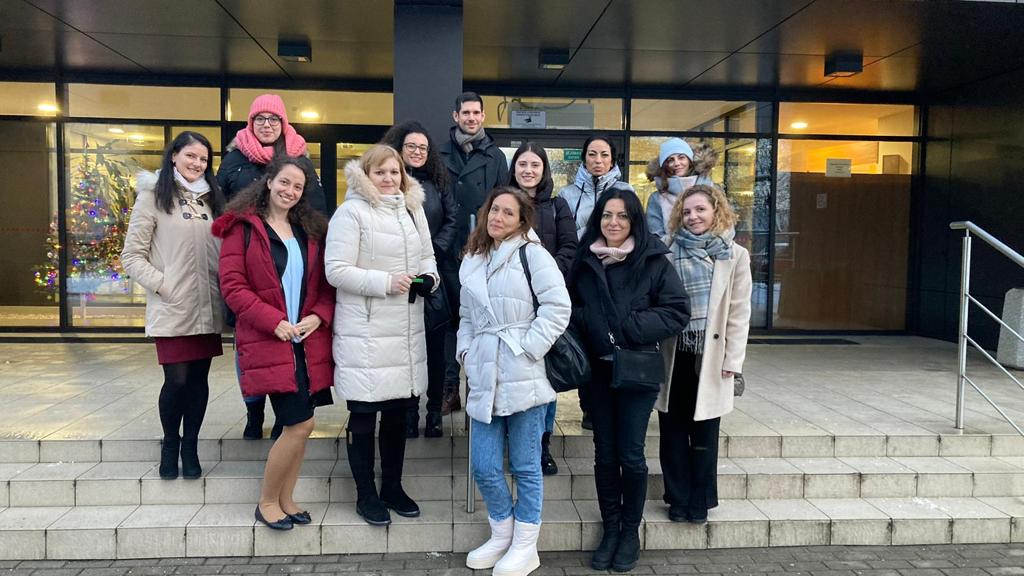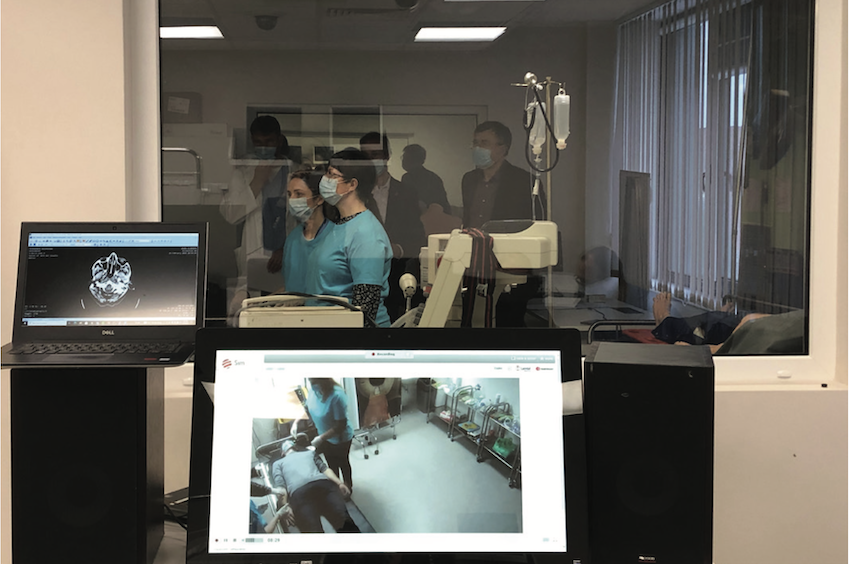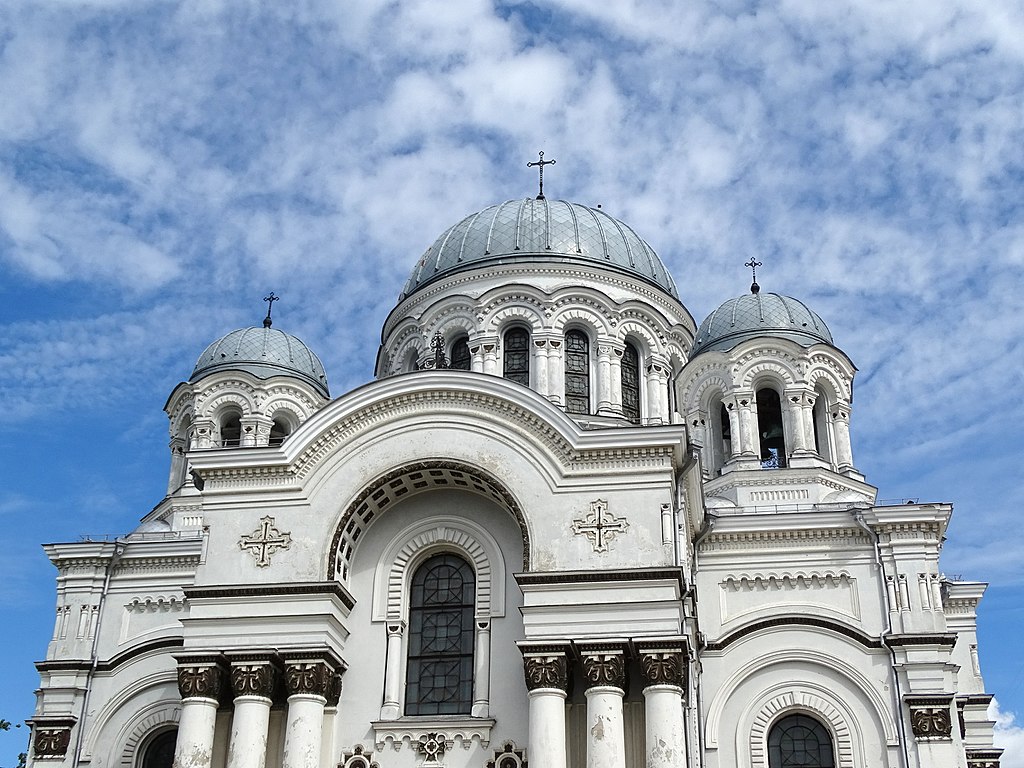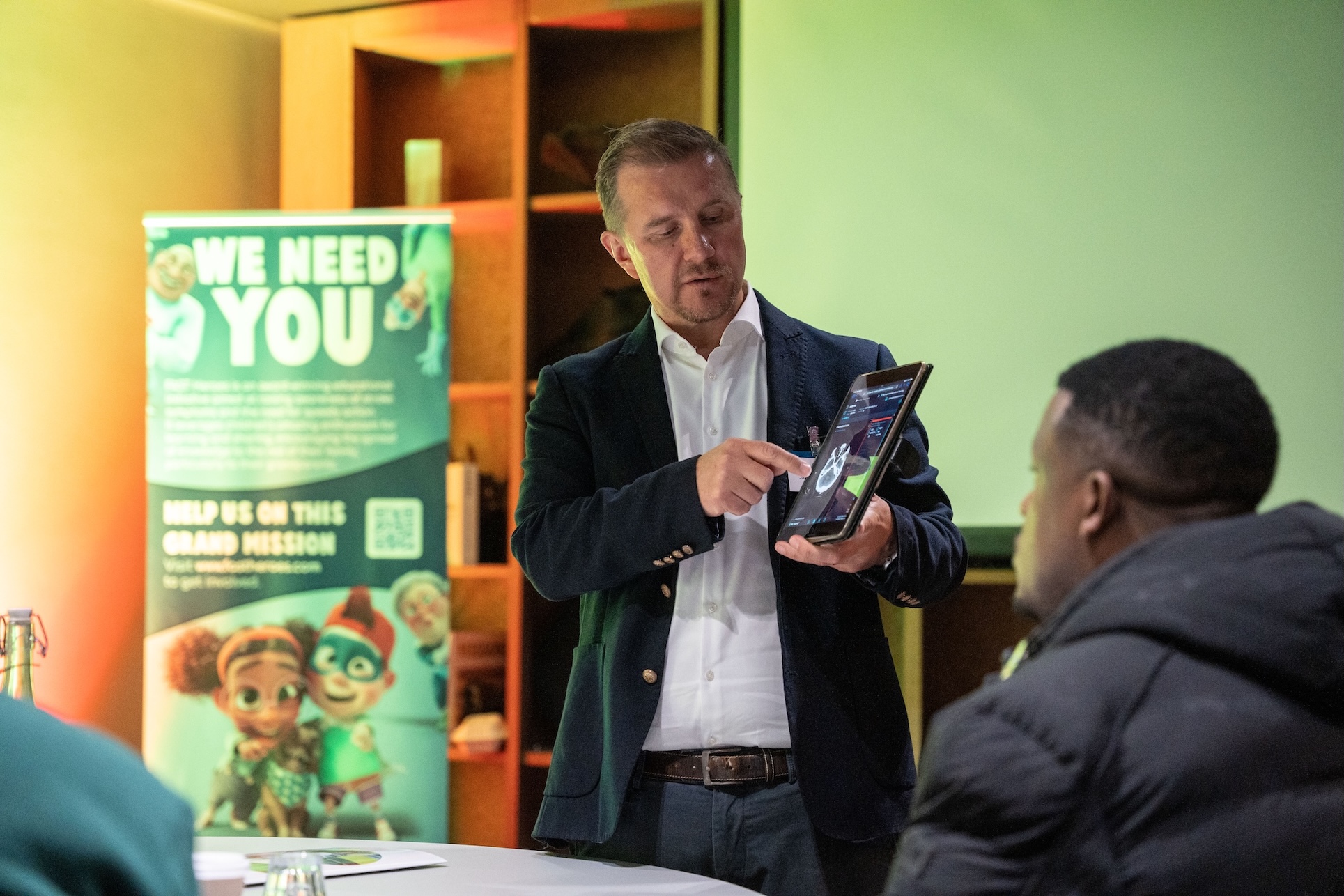
O Dr. Lengyel Gabriella Kincsó é residente em neurologia no Hospital Saint Pantaleon, na cidade húngara de Dunaújváros – um “futuro neurologista” que se chama na sua conta do Instagram, onde publica uma nova imagem da mesma árvore de Natal a cada dezembro. No entanto, no passado mês de dezembro, antes de a árvore de Natal subir, a Dra. Kincsó publicou uma galeria de imagens que tinha tirado em Kaunas, na Lituânia.
Existe a Igreja de São Miguel, o Archangel; o bastão coberto de neve e a torre redonda de tijolos do Castelo de Kaunas; as decorações de Natal na Avenida de Laisvés, a rua pedestre mais longa da Europa de Leste, e a entrada do Hospital da Universidade Lituana de Ciências da Saúde (LSMU), a maior e mais avançada instituição médica nos países do Báltico.
“Evento de Simulação de AVC de Kaunas no estado de espírito de Natal com a equipa maravilhosa”, diz a legenda. A imagem final é da “equipa maravilhosa” – um grupo de médicos da Bulgária, Hungria e Roménia que acabaram de concluir dois dias de formação sobre AVC no Centro de Simulação na LSMU.
Foi o terceiro evento de simulação a ocorrer em Kaunas, à medida que as temperaturas desceram entre setembro e dezembro de 2022. Um quarto para médicos da Ucrânia tinha sido planeado para novembro, mas foi adiado depois de um míssil vago ter levantado receios de que a guerra entre a Rússia e a Ucrânia estivesse a derramar para os seus vizinhos polacos.
A Lituânia partilha fronteiras com a Polónia, Letónia, Rússia e Bielorrússia. É o maior dos estados do Báltico, uma região desproporcionalmente afetada pelo AVC. A trombólise intravenosa (TVI) ficou disponível em dois hospitais na capital Vilnius em 2002 e, a partir de 2007, as diretrizes atualizadas da Associação Lituana de AVC recomendaram a TVI como primeira linha de tratamento para AVC isquémico. A primeira trombectomia mecânica foi realizada em 2012.
No entanto, menos de um por cento dos doentes com AVC isquémico receberam terapêutica de recanalização nos anos anteriores a 2014, quando foi estabelecida uma rede nacional de cuidados de AVC com o objetivo de ter um hospital preparado para AVC a uma hora de alcance de cada um dos 2,8 milhões de cidadãos da Lituânia.
A partir de 2017, a comunidade de AVC lituana recebeu apoio da Iniciativa Angels. Foi introduzida a monitorização da qualidade e os hospitais inscritos no RES-Q. Em 2020, as taxas de tratamento para trombólise e trombectomia estavam ao mesmo nível do Plano de Ação contra o AVC para os objetivos europeus para 2030, e as taxas de mortalidade no hospital tinham diminuído abaixo de 10 por cento na maioria dos centros de AVC.
Na LSMU em Kaunas, o tempo porta-a-agulha médio tinha descido para 34 minutos. Durante uma visita ao hospital, a consultora Angels Rita Rodrigues fez uma visita ao campus, incluindo um novo edifício e um sofisticado centro de simulação que tinha sido estabelecido para que estudantes e residentes pudessem aprender a gerir situações potencialmente fatais num ambiente seguro.
“Porque não usá-lo para o AVC?” sugeriu.
Foi uma ideia que transformou a formação de AVC na Lituânia e desencadeou uma parceria entre a Angels e a LSMU que verá o centro de simulação em Kaunas tornar-se um marco na melhoria da qualidade dos cuidados de AVC na Europa Oriental e Central.

Os planos INICIAIS para trazer grupos internacionais para a Kaunas para formação foram prejudicados pela pandemia da Covid, mas retomados no final de 2021.
Em janeiro de 2022, um evento piloto para médicos da Ucrânia, Bielorrússia e vizinhos mais distantes, incluindo Geórgia e Moldávia, foi um sucesso retumbante que serviria de modelo para eventos futuros.
No pódio, no primeiro dia, estavam dois especialistas de Kaunas e dois de Vilnius – os neurologistas Prof. Antanas Vaitkus e o Dr. Prof Vaidas Matijosaitis do Departamento de Neurologia da LSMU, e o Dr. Prof. Aleksandras Vilionskis e o Prof. Dalius Jatuzis, respetivamente, o chefe do centro de AVC no Hospital Universitário Republicano de Vilnius, e da Clínica de Neurologia e Neurocirurgia na Universidade de Vilnius.
Deram uma visão geral da gestão do AVC hiperagudo e do valor da simulação na formação de AVC, e partilharam a trajetória do AVC na Lituânia ao longo de cinco anos com a Angels. Após uma visita à unidade de AVC da LSMU e às salas de emergência e imagiologia, foi tempo de ação, uma vez que os participantes foram divididos em equipas e informados sobre uma série de cenários clínicos.
Rita explica como funciona. As funções são alternadas dentro das equipas para que todos tenham a oportunidade de participar como neurologista, paramédico, doente e enfermeiro. Enquanto uma equipa está a participar numa simulação, as outras têm funções que têm de observar cuidadosamente e comentar durante o debate.
Antes do evento, é distribuído um questionário pré-workshop aos participantes para que as perceções sobre as condições em cada país possam informar a escolha de cenários clínicos.
A capacidade dos apresentadores de adaptarem a discussão ao nível de experiência na sala é um dos motivos pelos quais estes eventos são tão bem-sucedidos, diz Rita.
Outra vantagem é que a formação também pode ser oferecida em russo, que é falado como um idioma estrangeiro por mais de 60 por cento dos lituanos.
Os médicos visitantes também têm muito para aprender com a equipa de AVC em Kaunas.
A LSMU já era um centro de AVC líder quando Rita conheceu pela primeira vez o Prof. Antanas Vaitkus e a sua equipa em 2017. Os seus serviços de emergência, imagiologia e patologia estavam disponíveis 24 horas por dia, os doentes com AVC tiveram prioridade no laboratório e sala de TC, e havia camas dedicadas suficientes para os doentes receberem cuidados pós-agudos especializados.
A via do doente com AVC foi bem organizada e incorporou ações prioritárias chave recomendadas pela Angels – teste POC para glicose no sangue e INR, e tratar o doente na TC.
A Rita e a equipa concordaram em definir uma meta porta-a-agulha inferior a 45 minutos, embora duas simulações sucessivas tenham sugerido que poderiam fazer ainda melhor do que isso. Pararam o relógio aos 15 minutos na primeira ronda e, em seguida, raparam mais oito minutos na segunda.
Cinco anos depois, a LSMU tem um caminho perfeito, diz Rita. Após um pitstop rápido no serviço de urgência, o doente prossegue diretamente para a sala de TC (existem dois dentro do SU) e, uma vez tratado, é admitido na unidade de AVC.
A experiência da Kaunas define um padrão elevado para médicos como o “futuro neurologista” Lengyel Gabriella Kincs e os seus colegas da Roménia e da Bulgária, mas é por isso que estão aqui. Além disso, a equipa maravilhosa que posou para uma fotografia de grupo fora da entrada da LSMU na neve de dezembro é agora também uma rede de AVC informal cujos membros prometeram continuar a partilhar experiências além-fronteiras.


